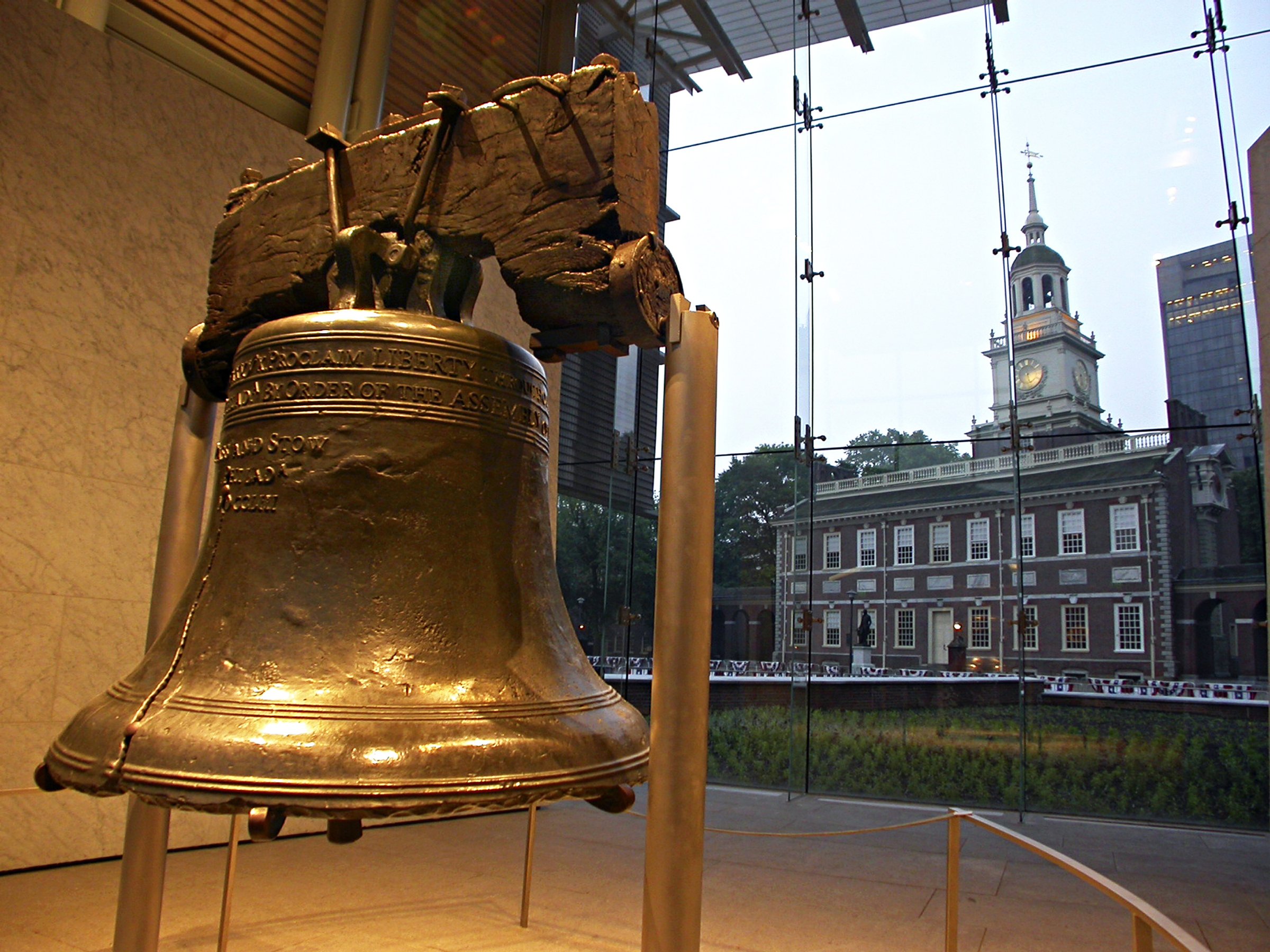
Recently the Museum of the Bible announced that an exact replica of the Liberty Bell, standing six feet tall and weighing some 3,200 pounds, was installed as its first exhibit item. When the Museum opens in November 2017, only two blocks from the National Mall in Washington, D.C., guests will be able to ring the bell and hear its original peal for themselves. It’s a fitting tribute to one of our nation’s most iconic and enduring symbols of freedom.
Yet much of what we know about its history has been overshadowed by myth and legend.
In fact, when the bell arrived from England in 1752, the rim actually cracked upon the first test of its clapper. After local foundry men re-cast the bell, the tone it made was so unattractive they re-cast it yet again before it finally rang out a resonant E-flat. Contrary to legend, the twice re-cast bell did not actually ring out on July 4, 1776 at the signing of the Declaration of Independence, nor do we even know when and how it acquired its signature crack, though that probably didn’t happen until the 1840s.
Perhaps the least known part of its history, and the most intriguing, is that it was the abolitionists who gave the Liberty Bell its famous name. The bell is inscribed with Leviticus 25:10, “Proclaim liberty throughout all the land unto all the inhabitants thereof.” The verse refers to the Year of Jubilee when slaves were to be set free in accordance with Hebrew tradition. William Lloyd Garrison, abolitionist and publisher of The Liberator, seizing upon the verse’s true context, re-printed a poem, “The Liberty Bell,” in 1844. The poem’s potent line “Ring it, til the slave be free” was a rebuke; that despite its inscription, the bell did not proclaim liberty to all the inhabitants of the land so long as slavery was allowed to persist.
You see, the bell is much like America’s story—we were forged with great ideals inscribed upon our original design. Yet we have cast and re-cast how we live towards that original idea, righting wrongs and correcting course time and again, often at an incredible cost.
But this is what I love most about America. However far we tread away from our ideal or however threatened our liberties feel–“we the people” have found our path back to freedom. In these times of deep racial and political division, we must remember we have been here before as a nation.
After his assassination, President Lincoln’s body was laid inside Independence Hall with the Liberty Bell and its inscription placed directly overhead. Only a small fraction of those wishing to view the body were able to enter, but as many as 140,000 visitors paid their respects that day. According to reports, the line to get in was never less than three miles long.
I find it incredibly providential that Abraham Lincoln—the man who delivered freedom to the slaves—was given his final honor while lying below a bell named by abolitionists, bearing a verse that commanded the rest of us to fight for freedom.
Whether you’re black or white, Democrat or Republican, The Liberty Bell’s true story reminds Americans of all stripes that our nation’s history—and future—belongs to us all. It challenges us to tear down systems that hold us captive and honor the price great men and women have paid to cast and re-cast the American mold to form a more perfect union.
The Liberty Bell proclaims who America truly is, even when she seems to be finding her way. As Lincoln aptly stated in his Second Inaugural Address as the Civil War was drawing to a close, “With malice toward none, with charity for all, with firmness in the right as God gives us to see the right, let us strive on to finish the work we are in… to do all which may achieve and cherish a just and lasting peace…”
More Must-Reads from TIME
- Cybersecurity Experts Are Sounding the Alarm on DOGE
- Meet the 2025 Women of the Year
- The Harsh Truth About Disability Inclusion
- Why Do More Young Adults Have Cancer?
- Colman Domingo Leads With Radical Love
- How to Get Better at Doing Things Alone
- Michelle Zauner Stares Down the Darkness
Contact us at letters@time.com